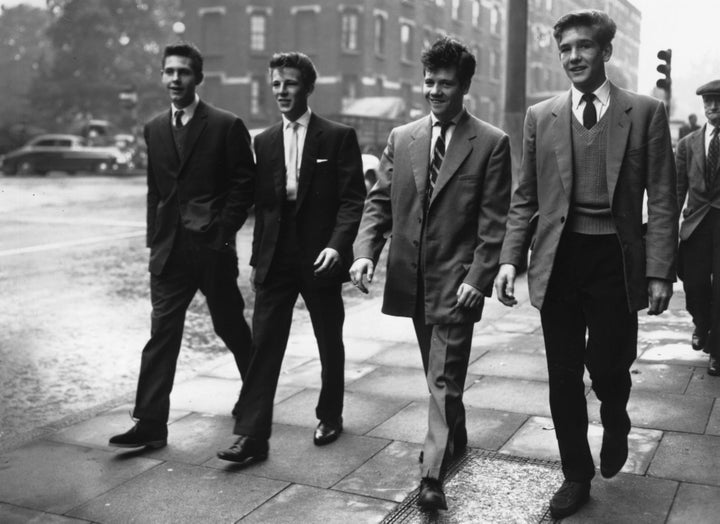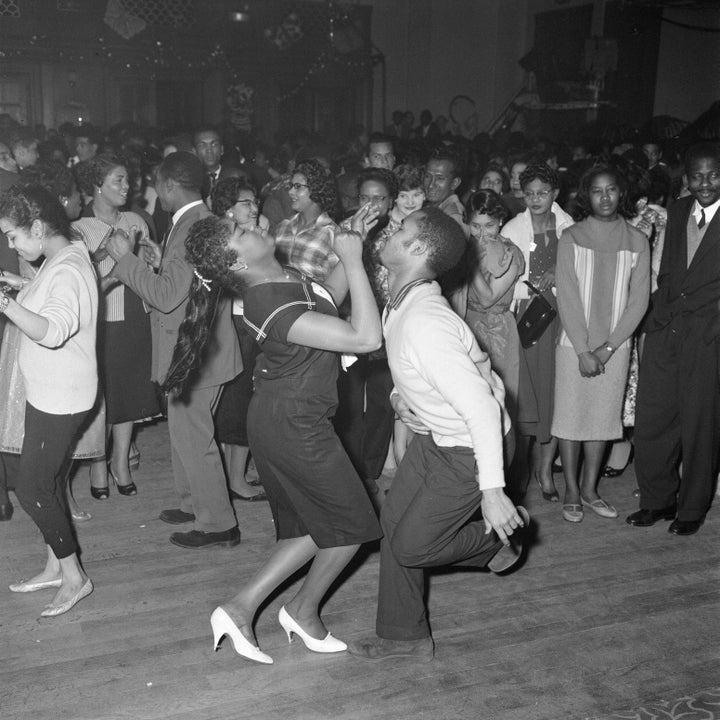
This article was originally published in 2018 to commemorate the 60th anniversary of the Notting Hill race riots which led to the inception of Notting Hill Carnival - widely hailed as “Europe’s biggest street party”.
Sixty years ago, a mob of hundreds of people went on the rampage on the streets of Notting Hill, clashing with West Indian immigrants in race riots that shocked the nation.
The nearly week-long clash in August 1958, between white youths known as Teddy Boys and members of the black community in the area, led to the first race relations campaigns and the creation of the famous Notting Hill Carnival.
Aimed at bringing the community together, the event has gone from strength-to-strength in the last six decades – but today’s residents fear gentrification of the area risks driving a wedge between neighbours once again.
After their arrival in the UK, Windrush migrants scrimped and saved money to eventually buy their own houses, with many selling up before the revamp of the area began in earnest.
Isolene Williams, of Ladbroke Grove, was one of those – though she still lives in the home she bought.
The retired dressmaker, 89, migrated from Jamaica in the 1950s and has been a Notting Hill resident ever since.
She said: “This carnival is supposed to be a lively, Caribbean occasion and, as far as I can see, it has changed along with the local area.
“The so-called ‘top notch’ people said they don’t want carnival any more. Meanwhile, we, the poor people who live here, can’t afford to have a stall like we used to, in the 1970s and 1980s.
“The whole thing has become privatised and we are are being priced out.”
Windrush citizens, who had been led to believe they would receive a warm welcome when they were invited to come and help rebuild Britain following the war, had been steadily arriving in the country from 1948, encouraged by campaigns from successive British governments.
The intervening 10 years saw a marked increase in black people in parts of the UK, as the Windrush generation settled in to work mainly within the NHS, British Rail and public transport, and brought over their children and relatives.
But by the 1950s, working class Teddy Boys were beginning to display hostility towards black families, a situation exploited by politician Oswald Mosley, who announced he would stand in Notting Hill in the 1959 general election.
Mosley held regular, well-attended meetings in the area in 1958. Other far-right groups such as the White Defence League inflamed the racist attitudes by urging disaffected white people to “Keep Britain White”.
The violence in Notting Hill, which at the time was a poor and rundown area, was sparked during the long bank holiday weekend when youths saw a white woman, Maj-Britt Morrison, arguing with her black husband, Raymond, outside Latimer Road Tube station.

A crowd of white men stepped in to defend Morrison, despite her not wishing to be defended and a small fight broke out between them and some of Raymond’s West Indian friends.
The next day on the 30 August, a mob of 300 to 400 white people were seen attacking West Indian residents with bottles, sticks and knives and throwing petrol bombs at their houses.
The disturbances, rioting and attacks continued every night until 5 September and despite mounting one of the biggest operations of the decade, the police struggled to contain the crowds.
West Indian residents, joined by Jamaican immigrants from Brixton, decided to fight back.
More than 140 were arrested and of the 108 people charged with crimes such as grievous bodily harm and affray, 72 were white and 36 were black, according to a report to the Metropolitan Police Commissioner.
At the Old Bailey, nine white youths were handed down exemplary sentences – a harsh punishment to act as a deterrent to others.
The official insistence at the time that there was no racial motive for the riots founded a legacy of mistrust of the Metropolitan police by black communities that continues to this day.

The following January, activist Claudia Jones organised a “Caribbean Carnival”, in response to the violence and poor race relations at the time.
The event was a precursor to what’s now known as the Notting Hill Carnival, which attracts around one million people annually and is one of the largest street festivals in the world.
A far cry from 1958, Notting Hill is now famous for being a fashionable London suburb. Despite the colourful festivities and million-strong crowd the carnival heralds, what some describe as social cleansing has widened the historical chasm within the community.
Split into two parts – W10 and W11 – Notting Hill has become a twilight zone between the rich, white middle class and the minority ethnic working class.
According to estate agent Foxtons, an average home in the area costs more than £1m, up from about £392,000 two decades ago. Some property companies have begun to market the area as a ‘village’.
The Organisation for Economic Cooperation and Development (OECD) said income inequality among adults has risen faster in Britain than in any other developed country since 1975, with wealth disparities in London even more pronounced.
Relatively newcomers to the Notting Hill area have a tendency to complain about the carnival, with nine out of 10 residents describing it as “frightening and intimidating” according to a 2016 poll commissioned by former Kensington MP Victoria Borwick.

Ongoing complaints have led to a number of changes being implemented, including an earlier finishing time, sterile zones, no-go areas and various policing tactics including facial recognition, which was deemed discriminatory and ineffective.
Activist Lee Jasper told HuffPost UK: “In the area, many people have moved into the millionaire’s playground which is Kensington and Chelsea, only to find themselves in the middle of a carnival area.
“These complaints are insincere and, really, part of a gentrification process led by residents to point out the worst excesses of carnival as a rationale for closing it down.
“But you can’t move into an area that has a decades-long association with a cultural event and expect to move the event.”
The former Labour Party adviser also believes the Grenfell tower tragedy is symbolic of the marginalisation felt by black and minority ethnic groups who have moved into the area.
He said: “Today, with Grenfell, we see the marginalisation of the poor in the immediate area of Notting Hill as being complete, with not even safety being prioritised by our local council. The cladding material used on the building turned it into a skyscraper fire-lighter, causing many deaths.”

Portobello Road resident TJ Blackwood was one of the first on the scene of the blaze.
“I was born and raised in this area,” the 25-year-old told HuffPost.
“A lot of my friends, who I grew up with, have been forced to leave the area because they can’t afford to live here any more.
“There isn’t a community spirit any more; I’ve had unpleasant encounters with some rich, entitled people with bad attitudes, who have recently moved in and literally think they run the place.”
He added: “I get stopped and searched by the police a lot more often, since the area became gentrified, because now my face now doesn’t fit.”